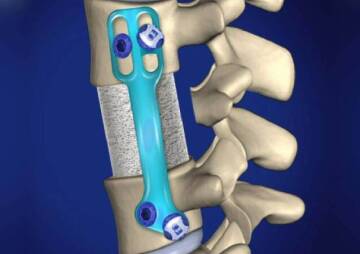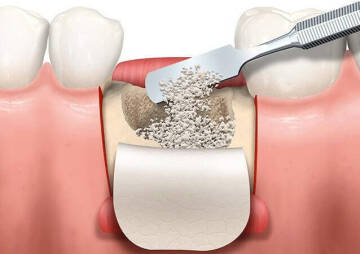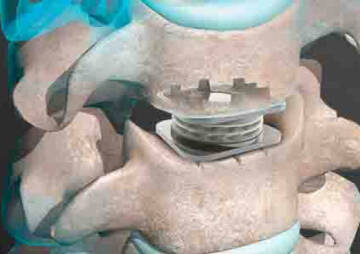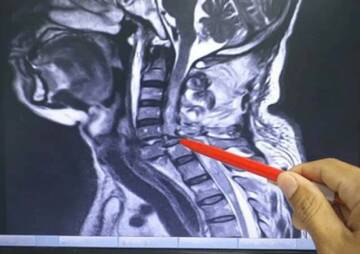-
Category
Craniomaxillofacial Surgery
Orthopedic Surgery
Spine Surgery
Orthopedic Implants
Hip Surgery
Knee Surgery
Pectus Excavatum
Bone Graft
Disinfectants
Healthcare
Is it possible to have a spine transplant?

Spinal bone grafting is related to the use of bone grafts in spinal fusion surgery. This transplant can be from natural bone or from artificial alternatives.
Numerous illnesses of the spine, such as degenerative disc and scoliosis, cause spinal motion restriction and pain, and to alleviate these issues, treatment and fusion of the vertebral column is necessary. Fusion aims to connect the bones together. What surgeons need for fusion is bone grafting. Spinal bone grafting refers to the use of grafts in spinal fusion surgery. This transplant can be from natural bone or synthetic alternatives.
You might think about what fusion surgery is. What is the relationship between fusion surgery and bone grafting? How is a bone graft performed? What is the difference between a natural and an artificial bone graft? Is a spinal bone graft possible? Below you will find answers to all these questions.
What is the main role of the spine?
The spine is composed of 33 vertebral bones that follow each other. These bones are divided into five parts: neck, chest, waist, sacrum, and coccyx. From the lateral view, the spine is like an S-shaped curve, and the vertebrae are positioned so that they allow the spinal cord to pass through the middle cavity.
Read more: How to use orthopedic pedicle screws in the spine
The spinal cord directs the function of organs from the brain to other parts of the body. For example, when walking, the legs receive signals from the brain through the spinal cord that instruct their nerve cells to step up one after another.

When the spine is damaged for any reason (disc degeneration, spondylolisthesis, spinal stenosis, scoliosis, vertebral fractures, infection, herniated disc and tumor), spinal cord function may be endangered, which is why it is necessary to correct the spine. But how?
There are several treatments for spinal issues, which surgery is a last resort. Surgery is performed in different ways, one of which is fusion and grafting.
Bone Graft in Spinal Fusion Surgery
Surgeons use the vertebral bone fusion technique to prevent movement between two or additional vertebrae, spinal deformities, and to repair fractures. In this surgery, a solid bridge is placed between two vertebral sections in the spine to stop movement in that part of the spine. This solid bridge, which is the same as bone graft, is used in two types of natural bone or artificial bone.
Read more: Titanium rods and their role in lumbar surgery
Bone grafting does not immediately improve the problem of the spine, but provides a foundation and environment that stimulates the growth of new bone. As new bone grows, the disturbed part of the spine fuses together.
Bone grafts have two natural and artificial categories. Natural grafts can be autografts, allografts, and xenografts. Each of these transplants has its own characteristics. If you'd like to know the difference, read more.
Types of bone grafts
Bone grafting has two general types, including natural grafts and artificial grafts. The natural graft itself is divided into three subcategories.
Natural graft
Autograph
A transplant that is taken from the patient's own bone. This transplant is best because it has golden standards including bone cells, proteins and bone matrix, all of which help to stimulate fusion. In addition, the chances of success are even higher.

Allograft
An allograft is a bone graft from a donor who usually dies and whose organs have been donated for medical purposes. The allograft bone does not have living bone cells and therefore is weaker than the fusion stimulant autograft.
Xenografts
It is a type of bone graft derived from a cow's bone.
Bone graft replacement (artificial bone)
Manufactured artificial bone or a manipulated version is a natural product that is used as an alternative to transplantation and allograft. These synthetic materials have similar properties to human bone, including a porous structure and proteins to stimulate fusion. These transplants include DBM, hydroxyapatite, calcium sulfate, tricalcium ceramic phosphate (TCP), bone morphogenetic protein (BMP) and bioactive glasses.

Which bone graft do surgeons use for the spine?
Medical technology has always been in progress, and patients undergoing spinal fusion surgery will have plenty of options about the type of bone graft they are going to face. Each type of bone graft has its own positive and negative cases, and the decision that a surgeon makes about bone grafts depends on a variety of conditions, including:
- Patient preference
- Immediate backup structure requirement
- Possible bone growth problems due to the patient's old age, smoking, diabetes, steroid use
- The surgeon’s unique technical methods
The surgeon will discuss possible options so you can make the right decision for yourself.
If you have decided to have a spine transplant surgery, it is a good idea to have information about the cost of the procedure.

How much does bone graft surgery cost?
The cost of spinal surgery has a variety of details, including:
- The cost of physical examination
- Cost of diagnosis and tests
- Hospital costs
- Length of stay
- Laboratory costs
- Cost of medicines
- Cost of treatment regimen after surgery
- Cost of follow-up sessions
In general, the costs of spinal and fusion transplants vary significantly depending on the insurance, place of residence, and the hospital or the doctor you choose. If you have health insurance, the average cost of a spinal fusion is an average of $53,577, and if you do not have insurance, it will increase to $ 157,026.

Final Word
Spinal fractures can put pressure on the spinal nerves, resulting in pain. These severe fractures are unstable and often require fusion surgery to remove and replace the damaged vertebrae and stabilize the spine. In this surgery, the damaged part is filled with bone graft material and then screwed to adjacent healthy vertebrae.
Grafts are small, natural or artificial bone fragments that are placed between vertebrae, stimulating bone production in the affected area and accelerating the healing process. Bone grafts, both natural and artificial, each have their own characteristics, and the doctor chooses the best type of transplant based on the patient's condition and according to his/her opinion to get the best result.
Resources:






